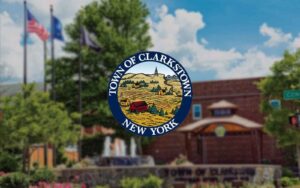A beautifully manicured lawn is a source of pride for many suburban homeowners and it’s easy
to understand why. It’s aesthetically pleasing and it helps to maintain the value of homes and
neighborhoods. But in many cases, the methods used to achieve an idyllic covering of grass
create mayhem in our local lakes and ponds.
The regular use of fertilizer is one of the most effective ways to ensure the growth of beautiful
green grass, and when used properly, can be an important and beneficial factor in maintaining a
healthy lawn. However, the same nutrients in lawn fertilizer that help your grass grow also
promote the growth of algae in our local waters. The problems start when runoff waters rich with
excess nutrients contained in fertilizer make their way into a local body of water. This provides
existing algae in the water with an abundance of food. The well-fed algae begin to multiply and
spread quickly and often bloom across the entire surface of the water, blocking out all sunlight.
The lack of sunlight alone has a devastating effect on the existing plant and aquatic life, but
that’s only the start of the trouble. As the algae dies, it sinks down and serves as food for
bottom-dwelling bacteria. The bacteria colonies thriving on the dead algae use up the water’s
oxygen, depriving fish and plant life of this vital resource. The combination of algae on the
surface and the bacteria at the bottom essentially starve out all other life in the water. It’s a
deadly cycle that often begins with someone’s desire for a lush, healthy, green lawn.
Over the years, most commercially available lawn fertilizers came to use a standard
combination of nutrients featuring nitrogen, phosphorus, and potassium. The fertilizer packaging
will list the ratios of these ingredients in the N (nitrogen)-P (phosphorus) -K (potassium) format
with a percentage of each one in the mix shown after the corresponding letter. However, most
lawns don’t actually need phosphorus, so it tends to be the most common excess nutrient
contained in the runoff water ending up in your nearest lake or pond creating algae blooms. In
addition to killing off fish and plant life, some types of algae blooms produce harmful chemicals
and toxins. These growths, often heavily fueled by phosphorus, are classified as Harmful Algae
Blooms (HABs) and are particularly harmful to human health and aquatic life.
In order to protect the health of our local waters, New York State passed a law making it illegal
to use fertilizer containing phosphorus except in cases of establishing a new lawn or where soil
testing proves that phosphorus is needed. Retailers who sell fertilizer must display phosphorus-
containing fertilizer separately from phosphorus-free fertilizers and post a sign near the
display.The law also places restrictions on the use of fertilizer within 20 feet of any water body
and requires that any fertilizer spilled onto sidewalks, driveways or other impervious services
must be swept up to prevent it from washing into drains or waterways. It is illegal to hose it off these surfaces. And finally, the law prohibits the use of any lawn fertilizer between the dates of
December 1st to April 1st. To determine whether or not your lawn needs phosphorus, a soil test
can easily be done through the Cornell Cooperative Extension.
I implore all Clarkstown residents to follow the law. If you are using fertilizer, look for
“phosphorus-free” wording or a “zero in the middle” of the N-P-K ratio on the bag. Compliance is
critical to the health of our aquatic environment and our drinking water resources. More than
100 water bodies in New York State cannot be used for drinking, fishing or swimming because
they contain too much phosphorus. Locally, potential phosphorus pollution has been identified
at Congers Lake, Rockland Lake and Swartout Lake. Even if you live far from a water body,
excess phosphorus from your lawn can still end up polluting lakes and streams. Be mindful of
how much fertilizer, if any, your lawn really needs and always follow the instructions on the bag
to avoid overdoing it, especially right before rain is expected.
Clarkstown is blessed with a wide variety of beautiful and scenic waters, from lakes and ponds,
to streams and rivers. Protecting them literally starts right outside our front doors. The simple
step of committing to the responsible use of the correct type of lawn fertilizer can make a
significant impact on these wonderful and vital natural resources.
Please, do your part. Look for the “zero in the middle” when buying fertilizer, be judicious in its
use, and help protect our beautiful aquatic ecosystems in the process.




